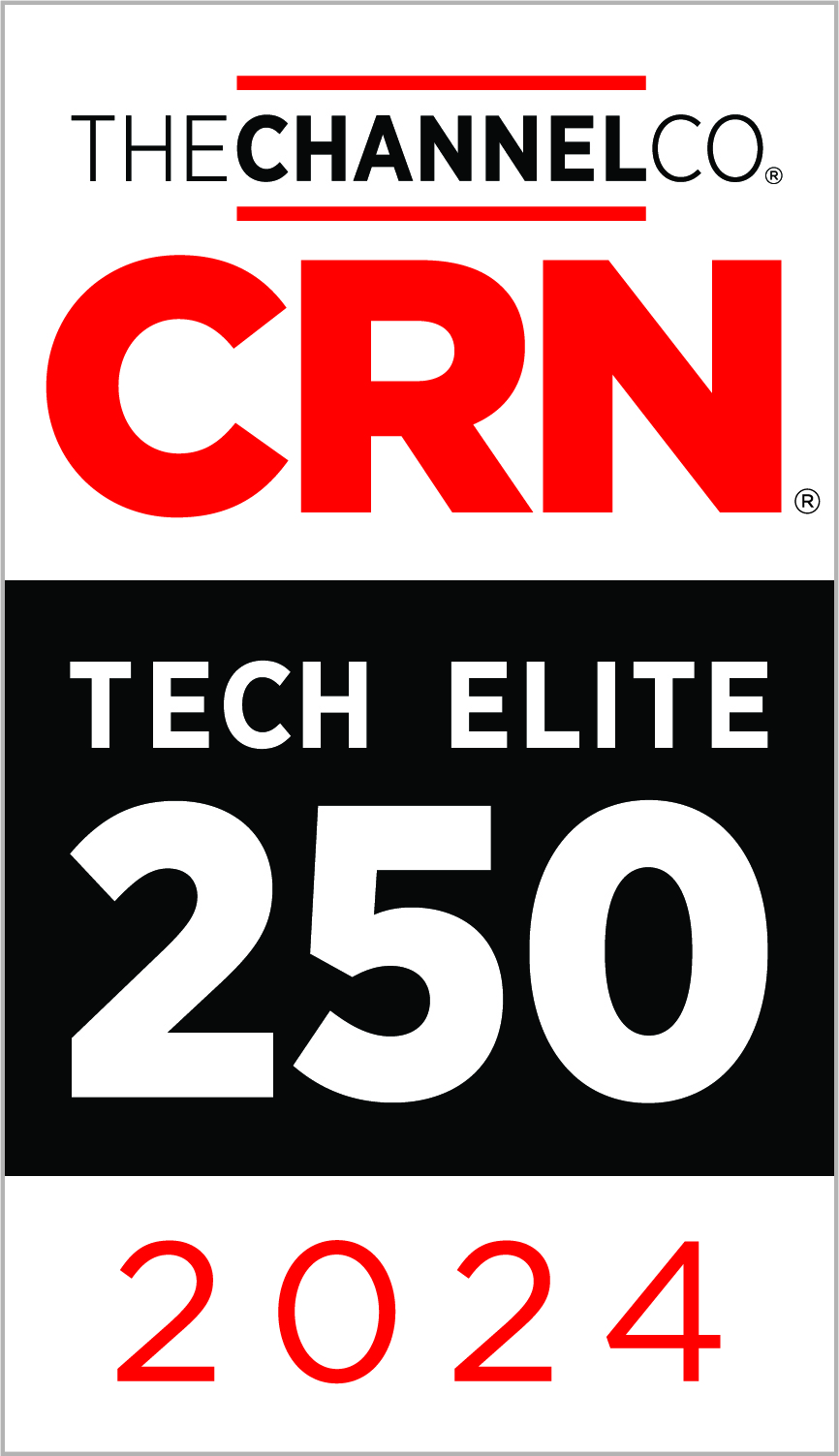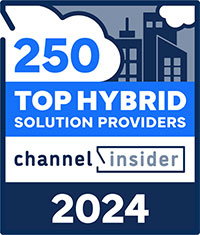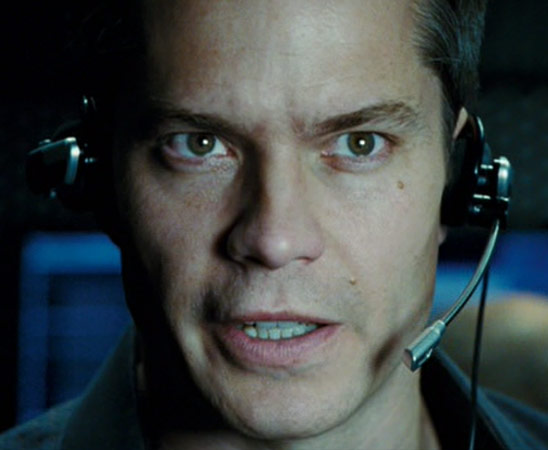 “John, you’re a Timex watch in a digital age” snidely quips Thomas Gabriel, the brilliant, but maniacal, cyber-villain of Live Free or Die Hard, the fourth (and some would argue best) entry in the Die Hard film series.
“John, you’re a Timex watch in a digital age” snidely quips Thomas Gabriel, the brilliant, but maniacal, cyber-villain of Live Free or Die Hard, the fourth (and some would argue best) entry in the Die Hard film series.
The “John” in question is, of course, none other than protagonist John McClane, the old-fashioned NYC Police Detective who becomes the reluctant hero in all five Die Hard films. In this particular installment, sophisticated hackers launch a targeted attack on the United States’ infrastructure, gaining control of all government controlled computers, and essentially hold the country for ransom. Can an aging cop with old school tactics hold his own against these advanced and intelligent cyber-terrorists?
Well, first of all…of course he can. We ARE talking about a Bruce Willis movie here (and he always wins, right? Maybe not in The Sixth Sense…but I’ll save that for another blog). By this point in the series, John has already saved dozens of hostages, taken on countless henchmen, and happily exclaimed “yippe-ki-yay” all along the way. His encounters thus far, however, have strictly been with semi-traditional adversaries using semi-traditional means of operation. How then, you might ask, is a fifty-something cop who’s known for being “the wrong guy, in the wrong place, at the wrong time” going to keep pace with such a formidable, high-tech group of foes? By rolling with the punches! Duh! Though he definitely takes matters into his own hands and deals with the situation “the John McClane way”, he does so while also gaining a different perspective, aligning with the proper allies, and obtaining the needed resources that do not come to him naturally (in this case, seeking out help from a couple of virtuous hackers, Matt Farrell and ‘The Warlock’, who are willing to use their talents to aid his cause). Later in the film, after narrowly surviving an onslaught of lethal henchmen, John retorts to Thomas Gabriel, “I know I’m not as smart as you guys at all this computer stuff. But, hey… I’m still alive, ain’t I?”
Although it may seem superfluous, the character arc that I have just laid out brings up an interesting point. Change. We see it in almost every aspect of our lives. Our neighborhoods, our bodies, the media, the stock market, our friends…you name it! The IT industry is no different. From the massive big-data servers of yesteryear to virtualization and advancements in cloud computing…infrastructure and disruptive technologies are constantly evolving and improving. It is how we adapt and move forward with this change that is important. Here at Zunesis, we strive to be the support system that helps customers implement and transition into this change.
 This is where the Die Hard analogy comes into play. Bruce Willis’ character from the film series is relatable, simply because he is often a victim of circumstance and forced to react when these seemingly insurmountable situations arise. His old-school style is appealing but it cannot be maintained forever. This becomes evident in Live Free or Die Hard when the villains John McClane is pitted against use tactics that are completely alien to him. Does he completely transform overnight? No. But he does reassess his environment and adapt accordingly. The same can be said of IT. The industry, technology, and processes are constantly changing and it is imperative that the customer base have the means to follow suit.
This is where the Die Hard analogy comes into play. Bruce Willis’ character from the film series is relatable, simply because he is often a victim of circumstance and forced to react when these seemingly insurmountable situations arise. His old-school style is appealing but it cannot be maintained forever. This becomes evident in Live Free or Die Hard when the villains John McClane is pitted against use tactics that are completely alien to him. Does he completely transform overnight? No. But he does reassess his environment and adapt accordingly. The same can be said of IT. The industry, technology, and processes are constantly changing and it is imperative that the customer base have the means to follow suit.
Zunesis has all the tools to make this happen. We partner with the top technology organizations and our Solution Architects have an average 20+ years of experience. Whether it is hyperconvergence, cloud migrations, hybrid IT, infrastructure refresh, health checks, assessments…you name it! Zunesis is here to help. Nothing must change overnight. A complete 180 is not necessitated. Just a gradual discovery of the exciting new things on the IT horizon. We are here to help! In this scenario, Zunesis is “The Warlock” (watch the movie and you will understand) and you, the customer, are John McClane. That’s right, YOU get to be John McClane! You’re the hero and we are the humble sidekick that helps you accomplish your goals! We are here for all your infrastructure solutions. Just let us know how we can help!
In closing, there are many ways to evaluate your IT environment and ascertain the best ways to prepare for the future. Cost efficiency, security, consolidation, streamlining, and many others can all be addressed. Remember…you’re John McClane! And Zunesis is here to aid you in your quest. Yippe-ki-yay!
 “John, you’re a Timex watch in a digital age” snidely quips Thomas Gabriel, the brilliant, but maniacal, cyber-villain of Live Free or Die Hard, the fourth (and some would argue best) entry in the Die Hard film series.
“John, you’re a Timex watch in a digital age” snidely quips Thomas Gabriel, the brilliant, but maniacal, cyber-villain of Live Free or Die Hard, the fourth (and some would argue best) entry in the Die Hard film series.
The “John” in question is, of course, none other than protagonist John McClane, the old-fashioned NYC Police Detective who becomes the reluctant hero in all five Die Hard films. In this particular installment, sophisticated hackers launch a targeted attack on the United States’ infrastructure, gaining control of all government controlled computers, and essentially hold the country for ransom. Can an aging cop with old school tactics hold his own against these advanced and intelligent cyber-terrorists?
Well, first of all…of course he can. We ARE talking about a Bruce Willis movie here (and he always wins, right? Maybe not in The Sixth Sense…but I’ll save that for another blog). By this point in the series, John has already saved dozens of hostages, taken on countless henchmen, and happily exclaimed “yippe-ki-yay” all along the way. His encounters thus far, however, have strictly been with semi-traditional adversaries using semi-traditional means of operation. How then, you might ask, is a fifty-something cop who’s known for being “the wrong guy, in the wrong place, at the wrong time” going to keep pace with such a formidable, high-tech group of foes? By rolling with the punches! Duh! Though he definitely takes matters into his own hands and deals with the situation “the John McClane way”, he does so while also gaining a different perspective, aligning with the proper allies, and obtaining the needed resources that do not come to him naturally (in this case, seeking out help from a couple of virtuous hackers, Matt Farrell and ‘The Warlock’, who are willing to use their talents to aid his cause). Later in the film, after narrowly surviving an onslaught of lethal henchmen, John retorts to Thomas Gabriel, “I know I’m not as smart as you guys at all this computer stuff. But, hey… I’m still alive, ain’t I?”
Although it may seem superfluous, the character arc that I have just laid out brings up an interesting point. Change. We see it in almost every aspect of our lives. Our neighborhoods, our bodies, the media, the stock market, our friends…you name it! The IT industry is no different. From the massive big-data servers of yesteryear to virtualization and advancements in cloud computing…infrastructure and disruptive technologies are constantly evolving and improving. It is how we adapt and move forward with this change that is important. Here at Zunesis, we strive to be the support system that helps customers implement and transition into this change.
 This is where the Die Hard analogy comes into play. Bruce Willis’ character from the film series is relatable, simply because he is often a victim of circumstance and forced to react when these seemingly insurmountable situations arise. His old-school style is appealing but it cannot be maintained forever. This becomes evident in Live Free or Die Hard when the villains John McClane is pitted against use tactics that are completely alien to him. Does he completely transform overnight? No. But he does reassess his environment and adapt accordingly. The same can be said of IT. The industry, technology, and processes are constantly changing and it is imperative that the customer base have the means to follow suit.
This is where the Die Hard analogy comes into play. Bruce Willis’ character from the film series is relatable, simply because he is often a victim of circumstance and forced to react when these seemingly insurmountable situations arise. His old-school style is appealing but it cannot be maintained forever. This becomes evident in Live Free or Die Hard when the villains John McClane is pitted against use tactics that are completely alien to him. Does he completely transform overnight? No. But he does reassess his environment and adapt accordingly. The same can be said of IT. The industry, technology, and processes are constantly changing and it is imperative that the customer base have the means to follow suit.
Zunesis has all the tools to make this happen. We partner with the top technology organizations and our Solution Architects have an average 20+ years of experience. Whether it is hyperconvergence, cloud migrations, hybrid IT, infrastructure refresh, health checks, assessments…you name it! Zunesis is here to help. Nothing must change overnight. A complete 180 is not necessitated. Just a gradual discovery of the exciting new things on the IT horizon. We are here to help! In this scenario, Zunesis is “The Warlock” (watch the movie and you will understand) and you, the customer, are John McClane. That’s right, YOU get to be John McClane! You’re the hero and we are the humble sidekick that helps you accomplish your goals! We are here for all your infrastructure solutions. Just let us know how we can help!
In closing, there are many ways to evaluate your IT environment and ascertain the best ways to prepare for the future. Cost efficiency, security, consolidation, streamlining, and many others can all be addressed. Remember…you’re John McClane! And Zunesis is here to aid you in your quest. Yippe-ki-yay!
The term “Intelligent Edge” is used in many ways, but perhaps the best way to think of it is as a place. The edge is where the action is. It’s a manufacturing floor, a building, a campus, a city, your house, a telecommunications outpost, a sports arena, or in other words, where the “things” are in the Internet of Things (IoT). IoT data originates remotely, often from equipment at the edge, enabling immediate access to the data and affecting immediate control of “things”
The edge is “intelligent” because now there’s technology in these places that’s smart, connected, computational, and controlling. Crucially, the Intelligent Edge provides analytics capabilities that were formerly confined to on-premises or cloud data centers.
The media and telecom industries face growing distribution pressures from increased video resolution, new formats, expanding bandwidth, and the need for better security and reliability. As a result, telecom service providers are placing sophisticated compute and control systems in businesses and homes. These distributed intelligent edges make the services more competitive and improve customer experiences.
Seven Reasons To Compute at the Edge
Edge computing can yield immediate insights from edge data at relatively low cost. Edge compute can be improved by shifting enterprise-class compute, storage, and management from the data center out to the edge. Organizations can leverage compute at the edge to:
- Minimize Latency: There are many applications that require immediate insight and control. For some mission-critical functions, compute must take place at the edge because any latency is intolerable.
- Reduce Bandwidth: Sending big data back and forth from things to the cloud, can consume enormous bandwidth. Edge computing is the easiest solution to this problem.
- Lower Cost: Even if bandwidth is available, it can be costly. Efficiency is an important element of any corporate IoT strategy.
- Reduce Threats: When you transfer data across the campus, state, country or ocean, it is simply more prone to attacks and breaches. Processing data at the edge can reduce security vulnerabilities.
- Avoid duplication: If all the data is collected and sent to the cloud, there will likely be some equipment duplication in memory, storage, networking equipment and software. If this duplication is not needed, then the associated increases in capital and operating expenditures are unwarranted.
- Improve reliability: Even without any nefarious activity from hackers, data can be corrupted on its own. Retries, drops and missed connections will plague edge-to-data-center communications.
- Maintain Compliance: Laws and corporate policies govern the remote transfer of data.

HPE Edgeline at the Intelligent Edge
The key to HPE’s IoT strategy is edge computing, combining OT and IT into one appliance. In June of 2016, HPE announced the EdgeLine 1000 and EdgeLine 4000 series of devices that allow more processing power to be deployed into the field near these connected devices that generate data. Both devices accommodate the same M510 or M710x ProLiant cartridges used in HPE’s signature Moonshot Chassis, with room for one cartridge on the Edgeline 1000 appliance and four cartridges on the EL4000. Both appliances have integrated wireless networking on the system.
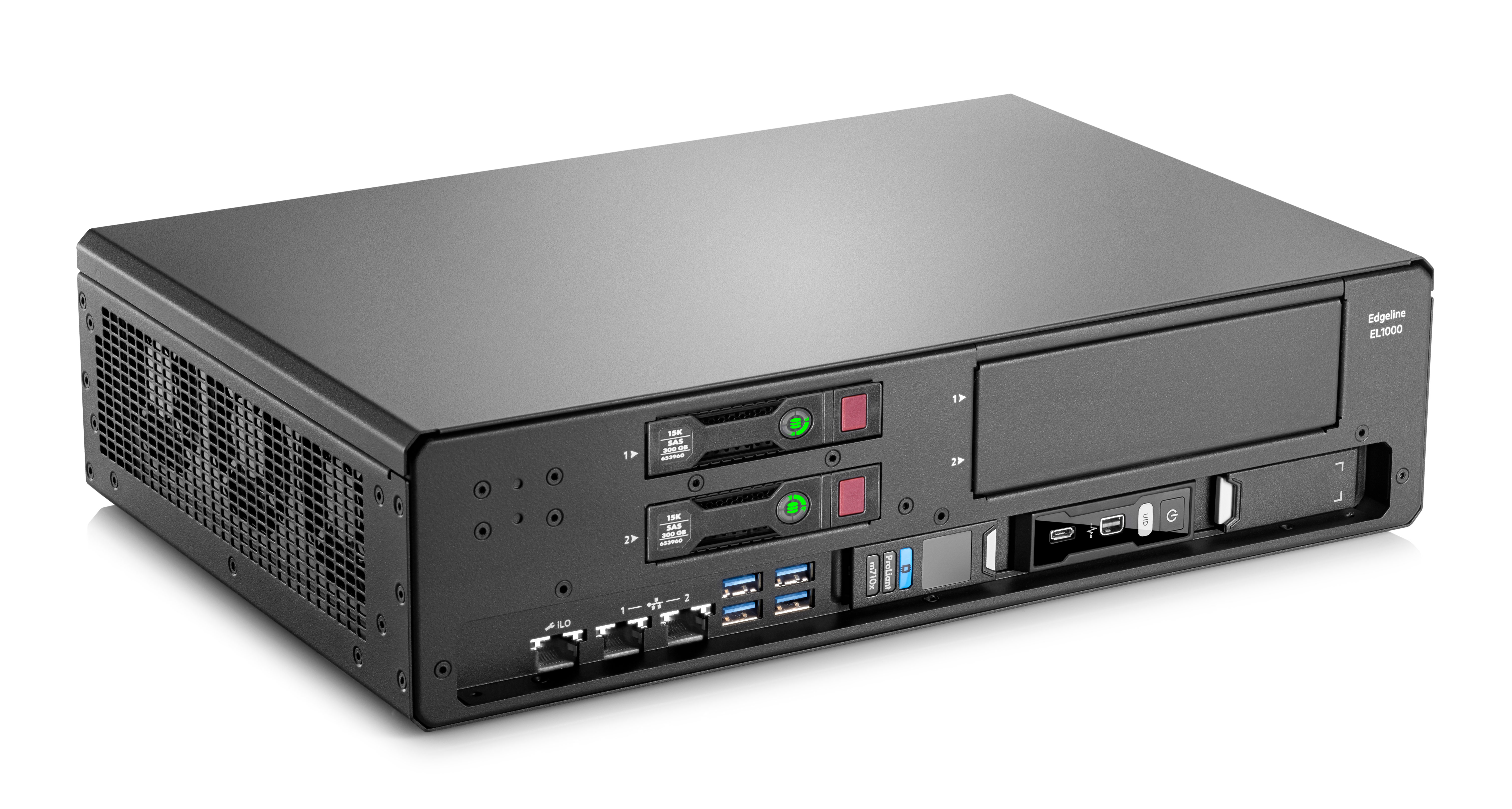
HPE Edgeline E1000

HPE Edgeline E4000
In Las Vegas, Zunesis recently showcased AI-based image and video analytics applications that run on the Edgeline Devices (in tandem with the customers VMS platform). The features and use cases are far reaching – just a few key features we showcased:
- Immediate identification of key image elements, such as people or an abandoned bag.
- Processing video nearer the point of capture, the camera, eliminating the need to transfer large amounts of video data into the datacenter or cloud, thus reducing bandwidth costs, accelerating reaction time and lowering risk of corruption or espionage.
- Engagement geometry for smart video surveillance that can direct camera viewpoints and aggregate video data of a particular location
- Long videos can be compressed into minutes by superimposing all moving elements over the same unchanging background. The technology is ideal for identifying popular items or routes.
Also exciting is HPE’s new Global IoT Innovation Lab – Asia Pacific (APAC), located at HPE’s APAC headquarters in Singapore, one of four globally that offers immersive Edge Experience Zones to demonstrate practical IoT use cases for industries such as oil & gas, manufacturing, engineering, healthcare, retail, smart cities and more.
For more details, check out this great article on the new Lab – http://www.techtradeasia.info/2018/02/hpe-opens-singapore-based-global-iot.html.
 System Center Configuration Manager (SCCM) provides a unified management console with an automated set of administrative tools to deploy software, monitor health, and enforce compliance across all devices in an organization. With Configuration Manager, IT technicians proactively manage the entire lifecycle of all Windows-powered devices. This includes deploying and maintaining systems and software, responding to security threats, distributing settings, and analyzing inventory data.
System Center Configuration Manager (SCCM) provides a unified management console with an automated set of administrative tools to deploy software, monitor health, and enforce compliance across all devices in an organization. With Configuration Manager, IT technicians proactively manage the entire lifecycle of all Windows-powered devices. This includes deploying and maintaining systems and software, responding to security threats, distributing settings, and analyzing inventory data.
Capabilities
Application Delivery
Configuration Manager takes a user-centric approach to application delivery that allows administrators to create one application that can be delivered to all of a user’s devices. It evaluates device and network capabilities and optimizes delivery.
Check for running executable files before installing an application. If an executable is running the user must close the running executable file (or it can be closed automatically for deployments with a purpose of required) before the deployment type can be installed.
Beginning in version 1702, for available deployments of task sequences, you can choose to use pre-cache content. Pre-cache content gives you the option to allow the client to only download the applicable content as soon as it receives the deployment. Therefore, when the user clicks Install in Software Center, the content is ready and the installation starts quickly because the content is on the local hard drive.
Device Management
Integration with Microsoft Intune provides a single administrative console for managing policies and comprehensive asset and compliance reporting across PCs as well as mobile devices, including Windows, iOS, and Android. With new on-premises mobile device management (MDM) capabilities, Windows 10 devices can now be also managed via MDM.
Endpoint Protection
Configuration Manager serves as the infrastructure for System Center Endpoint Protection. It delivers a single solution for malware protection, identification, and remediation of vulnerabilities, while giving visibility into non-compliant systems.
Compliance and Settings Management
You can create a baseline for “desired configuration state” and ensure that all devices comply through auto remediation or alerts.
Software Update Management
Configuration Manager simplifies the complex task of delivering and managing updates to IT systems across the enterprise. IT administrators can deliver updates of Microsoft products, third-party applications, hardware drivers, and system BIOS to a variety of devices, including desktops, laptops, servers, and mobile devices.
Operating System Deployment
Configuration Manager distributes operating systems to physical desktops and eliminates the inefficiencies and errors associated with manually installing applications. With Windows 10, Configuration Manager can also manage in-place upgrades which significantly reduce the time and complexity of deploying Windows.
Inventory
Configuration Manager can inventory hardware and software in your organization to help give you a view into what resources you have. With Configuration Manager, you can enable custom hardware inventory more easily and extend the inventory schema.
Reporting
Reporting in Configuration Manager helps you gather, organize, and present information about users, hardware and software inventory, software updates, applications, site status, and other Configuration Manager operations in your organization.
Asset Intelligence
Administrators can have continuous visibility into hardware and software assets and usage. Asset Intelligence translates inventory data into information, providing rich reports that help administrators with software purchasing decisions, upgrade plans, and license reporting.
Power Management
Get more out of your energy-saving hardware with a comprehensive set of centralized client power management tools. Configuration Manager works with the capabilities built into your Windows operating system to help you optimize power settings at a granular level.
Windows 10 Management
Configuration Manager is designed to keep pace with Windows 10 updates to provide support for new Windows features as they become available. When Configuration Manager is integrated with Microsoft Intune, you can choose between multiple deployment and management options of Windows 10 that work best for your business.
In-Console Updates
Updates and servicing node in the Configuration Manager console provides more frequent and easier-to-apply updates for new features, cumulative updates.
Data Warehouse Service Point
Use the Data Warehouse service point to store and report on long-term historical data for your Configuration Manager deployment.
The data warehouse supports up to 2 TB of data, with timestamps for change tracking. Storage of data is accomplished by automated synchronizations from the Configuration Manager site database to the data warehouse database. This information is then accessible from your Reporting Services point.
Reporting
Reporting in System Center Configuration Manager provides a set of tools and resources that help you use the advanced reporting capabilities of SQL Server Reporting Services (SSRS) and the rich authoring experience that Reporting Services Report Builder provides. Reporting helps you gather, organize, and present information about users, hardware and software inventory, software updates, applications, site status, and other Configuration Manager operations in your organization. Reporting provides you with a number of predefined reports that you can use without changes, or that you can modify to meet your requirements, and you can create custom reports. Use the following sections to help you manage reporting in Configuration Manager.
Configuration Manager uses SQL Server Reporting Services as its reporting solution. Integration with Reporting Services provides the following advantages:
- Uses an industry standard reporting system to query the Configuration Manager database.
- Displays reports by using the Configuration Manager Report Viewer or by using Report Manager, which is a web-based connection to the report.
- Provides high performance, availability, and scalability.
- Provides subscriptions to reports that users can subscribe to; for example, a manager could subscribe to automatically receive an emailed report each day that details the status of a software update rollout.
- Exports reports that users can select in a variety of popular formats.
If you are utilizing SCCM today, but aren’t completely satisfied with how it is functioning, Zunesis can help with an SCCM Health Check. With this Health Check, we are going to focus on your Server Site and Component health, the health of the client system and the Configuration Manager client itself. We want to make sure the client system is properly configured to install the Configuration Manager client, to get policies, run inventory, and install software and patches. Your current environment will be documented and recommendations will be made to make sure your SCCM environment is delivering the results you intended it to deliver.
If you have ever read something that I have written in this space, you most likely can guess that I love movies. I would not say I am a movie “buff” or a true “aficionado”, as I don’t actually get to watch as many as I would like. Instead, I am constantly intrigued by the strange, small, or mundane things about the movie industry that end up either making a huge difference in the movies we watch or even affecting our culture in general.
 As some of you may know (at least all those not currently on assignment in Antarctica), the movie industry just had its biggest night. The Academy Awards were broadcast across the globe to many avid movie fans, award show viewing parties, and the average casual watcher. The Academy Awards and the people they employ work tirelessly on getting everything in this presentation just right. They want the best lighting and camera angles to highlight some of the most aesthetically pleasing and talented performers on the planet, as well as showcasing the fashion statements they make. They work tirelessly to choreograph everything, so they can perform flawlessly, on a night that is celebrating the many flawless performers in their industry. Year in and year out this awards show is put on with rarely even a small hiccup.
As some of you may know (at least all those not currently on assignment in Antarctica), the movie industry just had its biggest night. The Academy Awards were broadcast across the globe to many avid movie fans, award show viewing parties, and the average casual watcher. The Academy Awards and the people they employ work tirelessly on getting everything in this presentation just right. They want the best lighting and camera angles to highlight some of the most aesthetically pleasing and talented performers on the planet, as well as showcasing the fashion statements they make. They work tirelessly to choreograph everything, so they can perform flawlessly, on a night that is celebrating the many flawless performers in their industry. Year in and year out this awards show is put on with rarely even a small hiccup.
Every year that is, except last year.
You may know what I am talking about. Last year during the night’s penultimate crescendo, the presenters that were announcing the biggest award in all of moviedom…were given the wrong envelope. Warren Beatty and Faye Dunaway, the presenters for this award, declared that the movie La La Land won the award for best picture. As the creative team behind La La Land took the stage to accept their award and congratulations were spread around, a producer named Jordan Horowitz was pulled aside by the stage manager Gary Natoli. They both looked at the envelope that Mr. Horowitz was holding. The envelope read that actress Emma Stone won an award for her part in La La Land, not that the movie won the award for best picture. From all accounts Mr. Horowitz was devastated, but went on to do something that was truly remarkable. He took the microphone and the correct envelope and stood up in front of all his peers and roughly about 33 million people and openly admitted there had been a mistake. He then corrected the mistake and announced the real winner of the Best Picture award, the movie Moonlight.
This, of course, caused major waves across all of the entertainment world, social media lost it collective mind, and journalists from around the country took to writing the best and most unique spin on it. Of course, the fallout was swift and severe for some (the two people responsible for the mistake were removed from their positions). After all the dust had settled, and the collective world had moved on to the next big thing, I was still captivated by it. It was not about the mistake, or the fact that it happened. It was not even about the backlash and sensationalism of the “scandal” (even though, again, it was just a mistake). In the end, I could not get over how a person at the very top of his profession, who had worked his whole life to finally achieve this goal and to be awarded with the highest honor in his profession, still had the guts and the moral fortitude to stand forward, admit there was a mistake and correct it. Even though it was not his mistake and he had every out to just walk away from it all. Hollywood and its culture is constantly and continually debated as to its moral fiber and the mark it has on the general populous, yet out of this hotly debated sector, a person took action to do what is right no matter what the consequences were.
What Would I do?
I have always tried to do what is right in both my personal and my business life. Business ethics is an important part of Zunesis, it is one of the reasons I work and have worked here for so long. It is also important for the vendors we partner with and sell. We do whatever is necessary to treat our customers morally and ethically. That being said, Mr Horowitz’s example, caused me to pause and self-evaluate. Could I do what he what he did? Stand up in front of so many and correct a wrong? After a lot of soul searching, the conclusion is since I have not been in that position, I can’t truly answer that. The answer I can give myself is to strive for improvement each and every day. To focus on doing what is right every time, no matter how hard it hurts, or how much I don’t want to. Not only work to improve myself but to also encourage those around me. No matter how well we have done this in the past, we can always do better. The customers we work with deserve this, our co-workers deserve this, our families deserves this. As you may know, the world of sales can be very cut throat. Doing what is right may lose us a deal, or even a customer. However, I would rather do what is right and lose, then what is wrong and win. I realize this is somewhat personal for a blog post from a technology company, but I felt compelled to share this and to provide a glimpse into the psyche that is Zunesis and its employees. I, in no way, want to say that Zunesis or myself is different or “better” than our peers. Instead I want to highlight what is important to us, as I hope it is important to those reading this. Thank you for reading!
When I was just starting out in my career, I was lucky enough to attend a leadership and teamwork conference. I have used the information I learned from that conference over the years and it is still valuable to business today. Many of the articles and books I have read since this initial conference has done nothing except validate these 3 ideas. I know there are many other ideas, but these work for me.
1. You don’t have to be the boss to be a leader.
First, let me say there are many very good managers that are not leaders in most companies. You don’t have to be a manager to be a leader and you don’t have to be leader to be a manager. A good manager has the ability to direct and develop people, execute against the corporate vision, and establish and execute against a process. These people are very valuable and are needed in every organization.
A good leader is a person that people want to follow, they are honest and have a high level of integrity. This is important to get people to buy into strategy and the journey. These people have a vision, and a path to get there. They inspire others and make sure everyone knows their importance to achieve the vision. As a result, they must have great communication skills. These are the people that lead by example, that people gravitate towards.
2. Soar with a team of Eagles.
What does it mean to be an Eagle? The Eagle represents honesty, truth, majesty, strength, courage, wisdom, power and freedom. Every organization has a group of people, I call Eagles. These are the top producers, the people that seem to fly higher. So, if an entire team can achieve this level, you can achieve far more together than as individuals.
“A Team – even a team of eagles – is a very special and fragile thing. A team is like a family. It’s held together with honesty, trust and respect. Never lose sight of what made your team great in the first place.” –Mike Singletary.
There are basically five steps to becoming a team of eagles.
- Agree on a common Goal. To be effective, everyone on the team needs to be pulling in the same direction, toward the same goal, with the same level of urgency.
- Know the abilities of each team member. Take advantage of each members strengths. Put people in a position to achieve success.
- Communicate effectively. For any team to be successful, it takes open and honest communications. Every team member must understand the vision and where they are in the process. For this to work, they must respect the other team members.
- Sharpen individual skills. Even though you are a member of a team, everyone should be looking at how to better themselves. Sharpen your skills, turn your weaknesses into strengths.
- Execute consistently. To execute consistently with excellence is a discipline and can be difficult to do. But for a team to excel, this must be a conscious decision of the team. Target deadlines and expectations must be consistently met or exceeded.
3. Attitude and Behavior are linked.
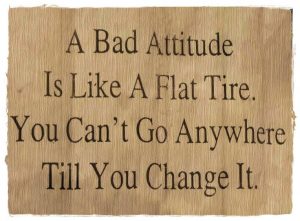 Attitudes can have a positive or negative affect on a person’s behavior. If you bring a negative attitude to work or to your team, it can negatively affect your behavior. Conversely, if you bring a positive attitude, it can have a positive impact. A single person can change the behavior of an entire team.
Attitudes can have a positive or negative affect on a person’s behavior. If you bring a negative attitude to work or to your team, it can negatively affect your behavior. Conversely, if you bring a positive attitude, it can have a positive impact. A single person can change the behavior of an entire team.
Organizations and teams where people respect and trust each other are more productive and have less turnover than organizations that do not have the respect and trust. Managers and leaders with positive attitudes view problems as an opportunity for success and growth. Managers and leaders with negative attitudes view problems and a reason for failure.
At Zunesis, we have a program called CustomerFirst. This program is about setting high expectations with our customers, then exceeding those expectations. To achieve this, we must pull together as a team, have the right attitude and do the right things.
